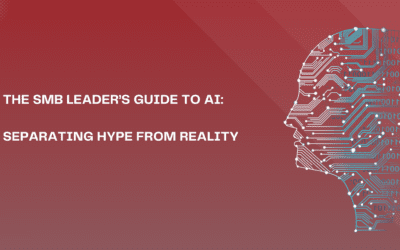Feeling the pain of VPN connectivity for remote work? Have no fear, there’s an alternative near. Digital Workspaces will keep you in the races.
Work and life are not normal. The pace at which we are forcing ourselves to define and maintain an appreciation over work-life balance is unbelievable. We are stressed. We are feeling less productive. We are working hours we have never worked before. We are struggling to adapt to the future of work that is now. We are juggling between trying to maintain a sense of normalcy in our life, aiding our children and, at times, our teachers in digital learning, and, to boot, trying to maintain positive contributions to our jobs.
We are also excessively worrying about what impacts the world of today and tomorrow will have on our personal lives, on our careers and on our finances. What we need now more than ever is technology that works to further minimize the influx of stress in our lives. Technology that works for us, not against us. Technology that is adaptable to the entropy of endless transformation.
In March, businesses were overwhelmed with the potential need to shutter physical place and continue conduct in a virtual world. Orders to close all non-essential businesses then came, forcing organizations to hurriedly shore up technology strategy to maintain user accessibility and, ultimately, productivity.
Time was of the essence. Unfortunately, the seemingly overnight transition to a remote workforce caught many organizations flat footed, exposing massive gaps in business continuity planning. Knee-jerk decisions soon followed – bring your work computers home and swell VPN connectivity. Enter chaos (again).
These reactive decisions – deemed appropriate due to the tools at hand – were also based on short-term need. Initially, and under preliminary social distancing mandates, there was a disclosed chance that life would return to normal within weeks. Here in Ontario, school boards were suggesting our children could return to school as early as April 6th. By that notion, perhaps life would then return to normal.
(Now we are not entirely sure when life will return to normal. As a matter of fact, portions of life may never return to what we have known as normal thus far. Life moving forward will take on a new normalcy and, perhaps, include the Future of Work we have all been speculating about for years, one where remote work is a regularity.)
As we progressed through March, it was evident social distancing would become a longer-term model. And for the organizations that hastily decided that a VPN-based remote work strategy would appease the masses, well, the pain was soon felt.
In chaos theory, “the butterfly effect is the sensitive dependence on initial conditions in which a small change in one state of a deterministic nonlinear system can result in large differences in a later state.”
With the massive and immediate shift to stay-at-home, our internet providers and backbone networks were given the ultimate test. Historically, home based providers saw increases in utilization during late afternoon through early evening, coinciding with kids returning home from school and parents settling in after a long day of work. Today, we are always home working while our children are both home schooling and consuming online media like never before. Multiply this by almost every single individual and family on your street, in your neighbourhood, across your city, province and country, and you can see the obvious impact. We are all competing for utilization across heavily congested network circuits and if your work strategy is based on an approach that requires significant bandwidth, you are likely feeling the competition (lag).
This is an example of the butterfly effect. Businesses that maintained a VPN-based approach for remote work did not foresee 1) the massive influx of internet demand and 2) the “small change” in the later states (i.e. VPN contribution on internet congestion when factored exponentially). VPN will not cut it anymore – you are not only impacting the productivity and well-being of your remote work staff (and your business bottom line), you’re also impacting the productivity and well-being of everyone else.
The fundamentals of a VPN strategy are to extend the private confines of the “data center” outwards to locations not natively on the private network, such as the network that exists when in a physical office. A VPN provides the same desk-like experience (positive or negative) when in the office to a location outside of the office, meaning applications that are deployed locally on the device are used as they normally would with backend traffic going across the VPN connection for end-to-end functionality.
In theory, VPN sounds great; however, there are many contributing factors that hamper VPN experience over time. Let us review several.
First, security. As discussed, VPNs extend the security boundaries of your most trusted and secured asset – your data center – increasing potential attack vectors that malicious characters are looking to exploit. This endpoint, now located in homes, is the prime point of entry into your environment, and the massive spike in our relatively gullible remote users is now at an all time high, unfortunately putting any security at risk. Take, for example, the fake (and malicious) COVID-19 reporting sites that surfaced, designed to lure unsuspecting prey into compromise. Once compromised, the VPN extends the ability for malicious code and actors to extort information and/or further damage and harm to systems. Certainly, there are mechanisms to thwart endpoint risk across VPN connections; however, it is a gamble and risk mitigation tactics should avoid potential threats at all cost.
Second, endpoints. For a VPN to function, it requires a device, plain and simple. If businesses allowed employees to take their existing corporate devices home, using VPN becomes less of a chore. However, what if your staff was not equipped with devices that were pre-configured with VPN functionality, or any corporate-owned devices at all? It would now be the responsibility of IT to equip remote worker devices with the necessarily capabilities and software to support VPN functionality. As you could imagine, there are zero standards enforced on user-owned devices, and the multitude of technical issues IT could face is daunting. With Windows XP, Windows 7, Windows 8, Windows 10, MacOS, Linux, ChromeOS, iOS, Android or, worse case, no device at all (rare, but a possibility), the supportability seems almost insurmountable, both in the short- and long-term.
The assumptions about home computing devices will or have already hampered your ability to provide a positive user experience. Further, if you are required to quickly equip home users with devices, you will face a dwindling supply of devices as the global chain of hardware manufactures struggle to keep up with demand. Demand is still exceeding supply. And if user-owned devices are your only option, the security concerns become even greater. What if the VPN is left enabled while your employees’ children use the computer? *Shudders*
Third, supportability. If IT happens to deploy everything required to support VPN functionality, the ongoing support can be just as, if not more, painful. VPN may work today but a looming update from Microsoft, or a change on the system, may wreak havoc it is functionality. After all, zero standards exist on home computers and updates are often automatically applied.
We forget the burden we place on people in IT. Though we are essential workers through this pandemic, we are also experiencing the same challenges as everyone else, and our ability to accommodate the need of remote users is increasing our workload requirements exponentially. If IT is forced to support a remote work strategy that is influenced by factors beyond our control, everyone will suffer. Antiquated home PCs, legacy operating systems, device failures (and supply) and congested internet are just a few variables that our internal IT teams cannot overcome, no matter what actions are taken. These variables also represent massive roadblocks to VPN functionality, positive user experience, productivity, and stress minimization. The intent now is to minimize the stressors placed on everyone, including IT, such that we can all learn to adapt and overcome.
Forth, experience. We have all come to expect availability and quality – high-definition streaming, immediate media availability and on-demand. When anything hampers our ability to access content and access it NOW, we become stressed, frustrated, and upset with the providers. When something is not available in our timeframe, the world is over (in our mind).
Now, we have left our physical offices where experiences were positive, for the most part – we lived on high speed connections where data and resources were as close as they ever could be. Applications worked and data opened. Now, via VPN, we must wait. The timeline to get work done no longer meets our expectations and coupled with the congestion on the internet, the wait is compounded and not always in a linear form. What used to take seconds now takes minutes. Though this is a technical challenge, the impacts are entirely emotional and physical.
As users are already faced with massive stress due to unfamiliar working conditions (at home, with children) as well as future uncertainty (job security, health, financial wellbeing), work-related stress is the least desirable outcome we as IT and business leaders want. We must be empathetic in our approach to accommodating the needs of our users in unprecedented times. What we might think will work for our users, may not actually work – we must think as users and understand the experience from a user-first perspective, and toss out the technical know-how we use (and abuse) for our own good.
You see, a vast majority of IT experts take their wealth of knowledge and translate it into a working experience that suits their own needs; an experience they believe will suit the needs of every user. It is a biased approach to IT strategy that rings especially true across smaller businesses where IT is limited in scope and size.
For example, I know quality of service (QoS) and have a QoS-capable router at home, to which I can define guarantees by application and by device. So, while the rest of my household streams content and complains of timeouts and poor quality and load time, I am happily working away without any impairment to my working experience. I am fortunate to know how to do this, and to have the necessary tooling available to me. I am a tech, but I am a tech that has a user-first mindset. Would I expect that my users know how to configure QoS, or purchase a QoS-capable router to ensure their working experience is not impacted by their household internet consumption? Absolutely not. However, and to a previous point, this is a variable that IT could ultimately control. Beyond our home router, everything is up in the air, figuratively.
VPN is beyond our control. We can control an endpoint, under most situations, however we cannot control the medium on which VPN navigates – the internet. If internet congestion is present, we cannot stream with the high-definition quality we have come to expect, nor can we work to the same level of productivity we have come to expect. Today, that is the reality of VPN.
What you should do.
Better the World through Technology, of course.
We have an amazing opportunity to rethink how we conduct business and how we treat our employees. An opportunity to provide massive technology investment to advance business and the wellbeing of our workforce. We also have to appreciate that life and work may never return to what we all once considered normal and take the opportunity to transform our IT strategy to accommodate a future filled with uncertainty and, quite likely, the continued existence of remote work.
If your business is in an industry that is fortunate to stave off the economic impacts of this global situation, you must continue to shift and pivot the business to pass benefit to your workforce. This is largely done by investing in technology that meets the resulting needs of today’s emergency, as well as the new normal that will result. A VPN-based delivery approach is not the future of work – a holistic digital workspace is.
A digital workspace is an integrated technology framework designed to deliver and manage app, data, and desktop delivery. It allows employees to access their apps and data real-time – on any device, from any location regardless of whether the information is stored through cloud services or in the data center. For a digital workspace solution to be successful, it must provide a unified, contextual, and secure experience for IT and end users.
A unified, secure, and intelligent digital workspace includes:
- App and desktop virtualization
- File sharing and content collaboration
- Unified endpoint management of all mobile devices
- Secure access to SaaS apps/secure browsing
- Single sign-on (SSO)
- Guided and automated workflows via machine learning.
A Digital Workspace provides:
A better employee experience. Research suggests that the more engaged employees are in their work, the more likely they are to be productive, self-starting, and innovative. But endless stacks of apps, systems, and sign-ins across mobile devices like laptops and smartphones are burying employees in a mountain of distractions and wasted time. Further, VPN-based approaches slow down the completion of business processes and task-based work, whereas a Digital Workspace approach removes the burden of network congestion and its impact on productivity. A Digital Workspace can achieve more with substantially less demand on networks.
Enhanced security and data breach protection. Both business and IT leaders alike want to allow employees to access what they require from anywhere work needs to get done, whether that is on the road, at a client site, or at home. But with employees now conducting 100% of their work from home, the potential for compromised accounts is everywhere. That is one reason why a digital workspace offers single sign-on (SSO) to every app and file, from any device. Fewer passwords mean less risk to the business — and fewer calls to the IT help desk. A digital workspace also improves security by giving IT a complete view into network traffic, users, files, and endpoints while providing stop-gaps to minimize endpoint risk on the greater data center footprint, making it easier than ever to stay ahead of both internal and external threats. Machine learning and artificial intelligence built into the digital workspace protect company data from hacks, malware, and end-user mistakes — long before they happen. And you can decide who gets access to what based on job role, location, device, or activity.
Flexibility to choose any technology your organization needs. A digital workspace makes it easy for organizations to embrace new technologies and the cloud without worrying about security or a compromised user experience. A digital workspace offers one place for people to access any app, whether SaaS, web, mobile or virtual. And IT can manage it all in one unified console on the back end.
Endpoint freedom. Instead of being concerned around what type of device is used, or who owns the device, IT is instead focused on merely providing a simplified method to access, typically a single web-based address. The type of device, client operating system, and all the other traditional worries that surround VPN-based approaches are no longer relevant. Further, purpose-built solutions, such as IGEL’s next-gen OS for cloud workspaces, provide an extremely simplified method to accelerate remote work support. And should devices fail, which they will, IT can simply courier a replacement device and have the user back up and running in no time. Worse case, users could even convert their televisions to function as a personal computer (not a difficult feat but does require some hardware). Essentially, if you have a device that can run a web browser, you will be able to access a Digital Workspace.
A Digital Workspace strategy is enveloped in our Modern Workforce approach, covered under our expertise of Workspace Craft and Collaboration services, and well aligned to our philosophy of Bettering the World through Technology. We are Canada’s experts in Digital Workspace design and deployment.
Of the 39,643 individuals Third Octet helped to work remotely by the start of April, a vast majority worked for organizations that had already started shifting their strategy to a Digital Workspace approach. Clearly, the ability for these organizations to break from traditional working conditions to a remote-first style was made exponentially easier due to their existing investments in technology, namely Citrix.
As we continue through Spring, we are now seeing businesses realize their knee-jerk and reactive decisions around remote work (and especially VPN-based approaches) were short-sighted and will not stand the test of time. They are now reconsidering their approach to sustaining remote work and provide a positive user experience, shifting conversations towards a long-term, proactive, and strategic target, factoring the need to sustain a new normalcy of remote work.
A Digital Workspace is not the future of work, it is the present of work.
You, too, can make a difference. As small as you may think your impact can be, the differences you can make in the lives of your workforce through positive technology engagement will have a butterfly effect on the rest of the world. Do your part to make a difference and Better the World through Technology.
If you’re interested in exploring a Digital Workspace, contact us to learn more about our Workspace Craft expertise and take advantage of a complimentary proof-of-concept to see, first-hand, how simple it will be on IT and how positive it will be for your workforce.







0 Comments